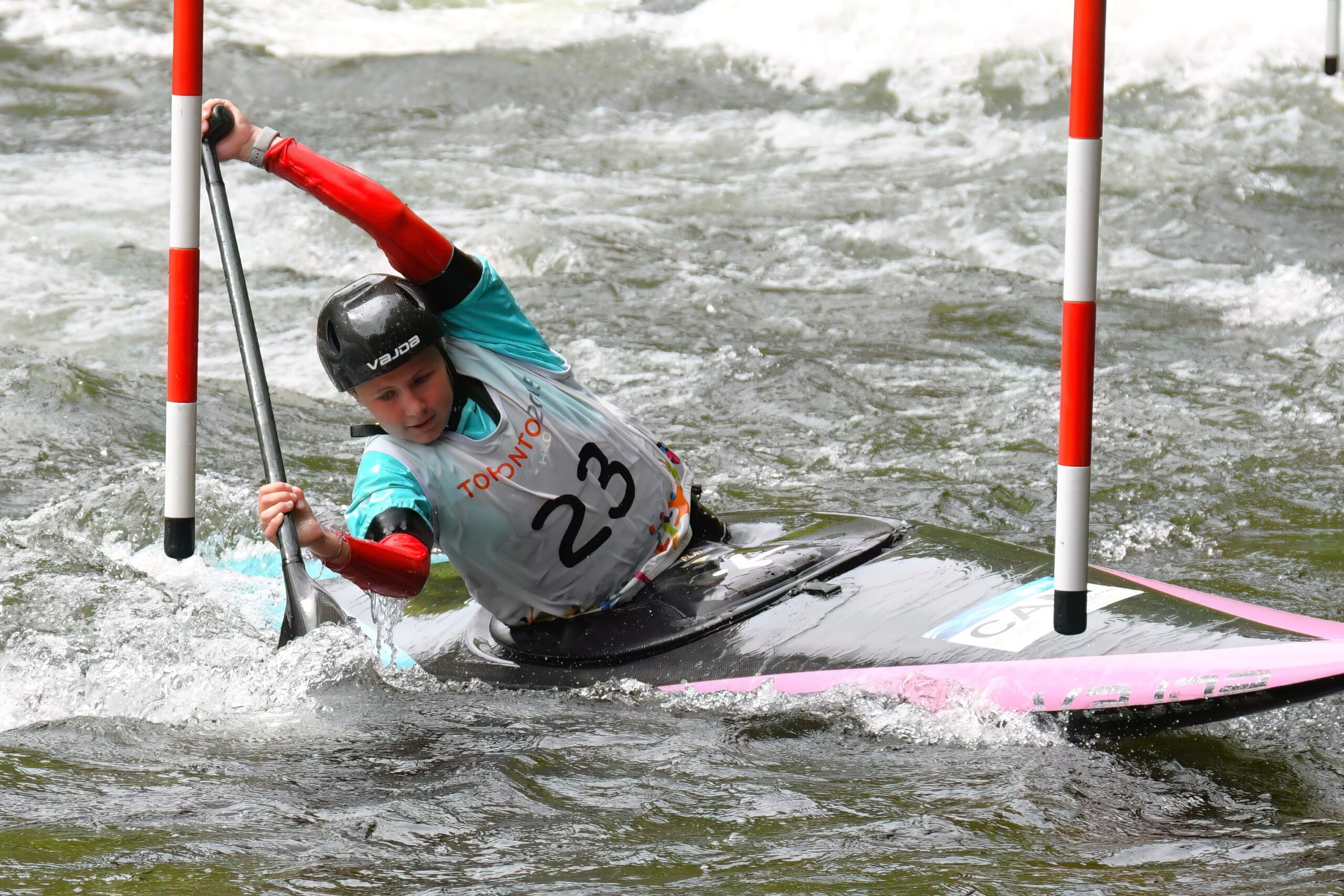Slalom Kayaking and Canoeing is an individual or 2 person sport within a strong team atmosphere. The primary training centre for slalom training in Ontario is the Ottawa Pumphouse, located at club house and training site in the National Capital. Only 1km from Parliament Hill.
Slalom – What is it
The sound of flooding whitewater may be enough to get your heart rate going. Add to that a few slalom paddlers determined to clock the fastest time to the finish line and you’ve got a fierce competition.
Similar to downhill ski slalom, canoe slalom athletes plummet down drops, pivot around turns and battle enormous currents to complete the slalom course as quickly as possible. A standard course has about twenty gates in total, where the paddler has to paddle downstream through the green gates and upstream through the red gates.
Canoe slalom (sometimes also called whitewater slalom) is a competitive sport that uses “decked” canoes or kayaks. Since the early years in the 1940s, heavier materials for boat-making, such as fiberglass, have been replaced by extremely light materials we have today such as kevlar and carbon fiber. The current light, fast boats we have now weight in at 9 kg with a length of 3.5 m.
The paddler must strategize to find the fastest lines and a variety of strokes and maneuvers are used to turn the boat quickly. Slalom requires tremendous fitness, agility and technical skill. The athlete’s boat, body and head must clear every gate so they will duck and stretch to wrap around tight turns to conserve as much time as possible.
Canoe slalom racing started in Europe and in the 1940s, and the International Canoe Federation (ICF) was formed to govern the sport. In 1992, Canoe Slalom permanently became a discipline in the summer Olympics.
There are currently 6 Olympic Medal events:
- Women and Men C1 (canoe single)
- Women and Men K1 (kayak single)
- Women and Men K1 Slalom Cross (kayak single)
For more information visit www.canoekayak.ca and www.canoeicf.com
Equipment
Slalom racing uses three types of boast: the single kayak (K1), the single canoe (C1) and the two-person canoe (C2). Slalom boats re steered with the paddle and by the athlete shifting their weight to edge the boat and carve through the water.
In Slalom Cross athletes use a plastic boat and a double-bladed paddle.
Kayakers use a double-bladed paddle and canoers use a single blade. In slalom, all paddlers are enclosed by a water-tight skirt. Kayakers sit in the boat while canoeists kneel on both knees.
Helmets and lifejackets are important safety equipment.

